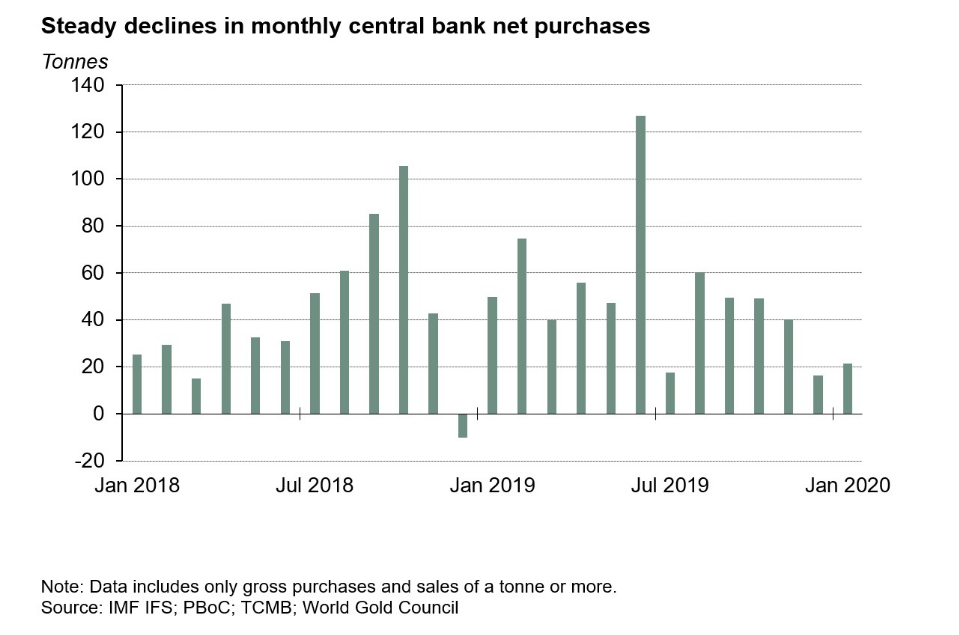Central bank buying gets off to slower start in 2020
Today we’ve published our latest central bank gold data, which now includes buying and selling activity for January 2020. You can find the full dataset here.
The headline story, considering only transactions of a tonne or more, is that central banks purchased 21.5t of gold on a net basis. This is an 57% decline in net purchases year-on-year, and well below the monthly average level of net purchases of 52.3t in 2019.
Relatively few banks were active in January, with Turkey (16.2t), Russia (8.1t), Mongolia (1t) and Kazakhstan (1t) the only notable purchasers to have reported so far. Similarly, net sellers were also scarce, with Uzbekistan (2.2t) and Qatar (1.6t) accounting for the bulk of the declines.
While more data for January might be released by late reporters in the coming months, a clear trend has been forming since August: the steady decline in the level of monthly net purchases. Despite the strength of buying last year – made more remarkable by the fact it followed 50-year high net purchases in 2018 – over the last five months, monthly net purchases have failed to maintain that momentum.

So, what could this mean for central bank buying in 2020? That’s a good question, and my natural cautiousness would say it’s probably too early to tell. (Obviously, it’s only March.) But this recent trend shouldn’t be ignored. But nor should we also lose sight of the fact that central banks remain net purchasers, even if at a lower level than we have come to expect to in the last two years.
责任编辑:闫梅